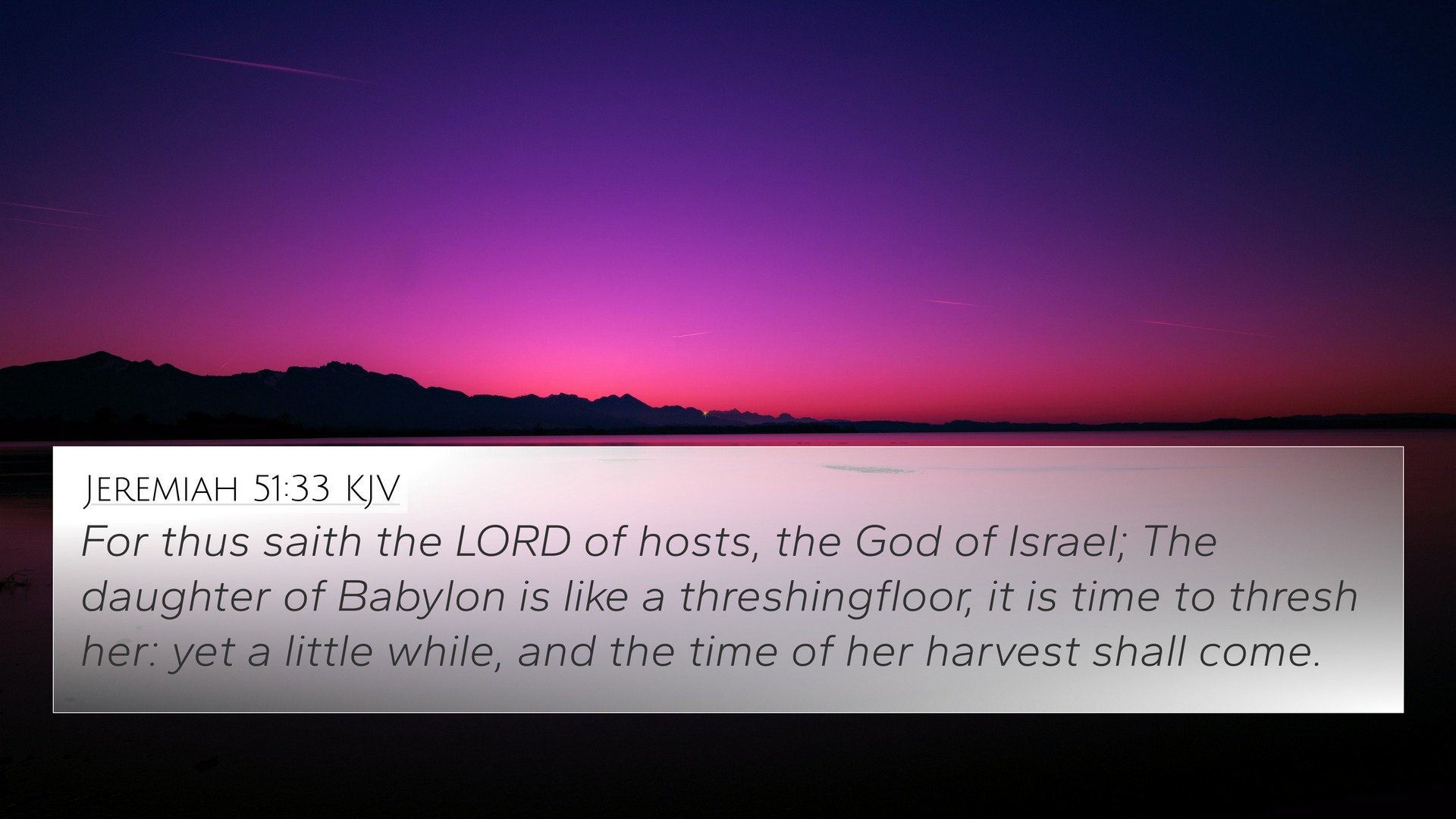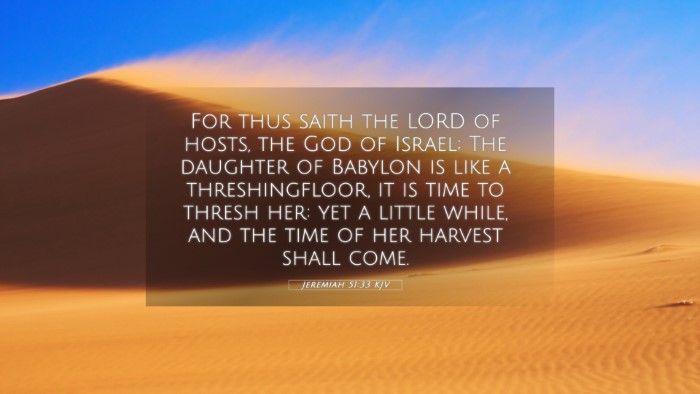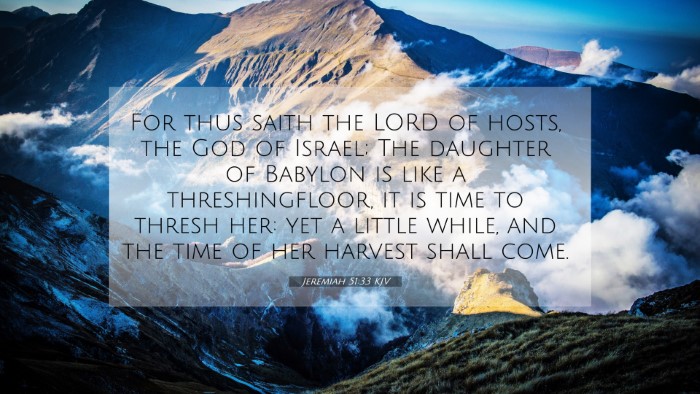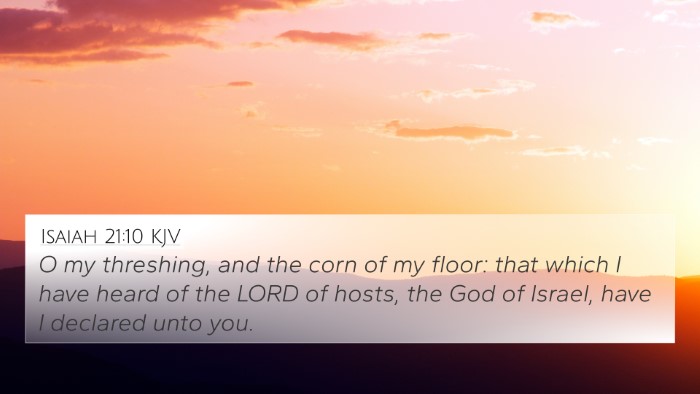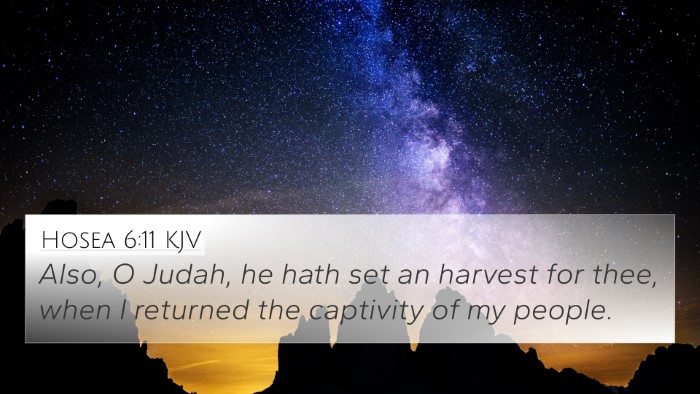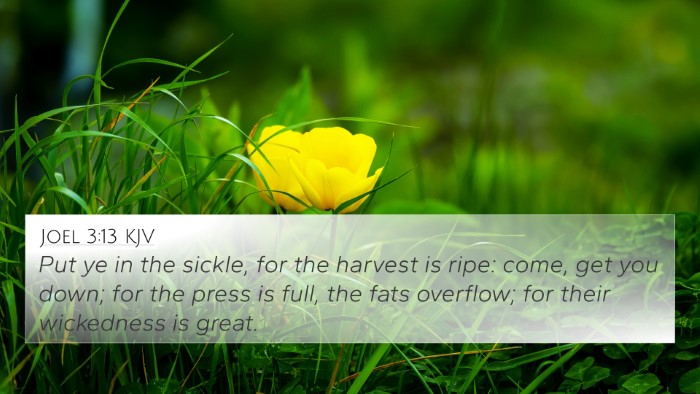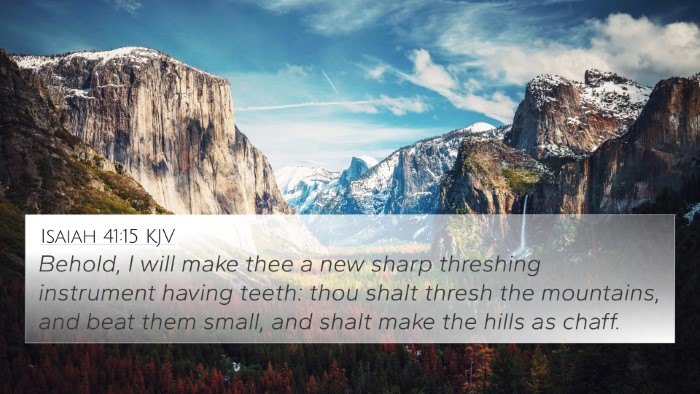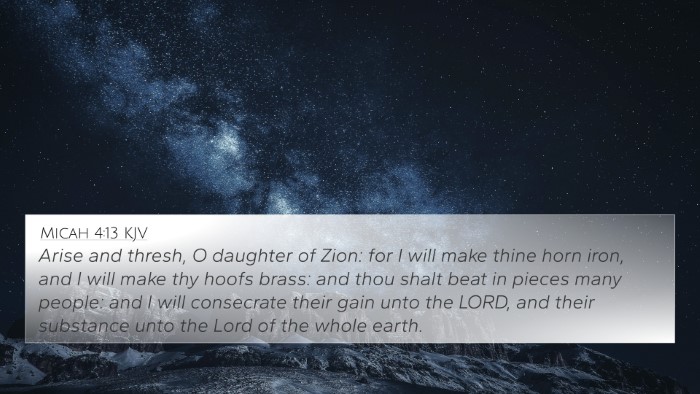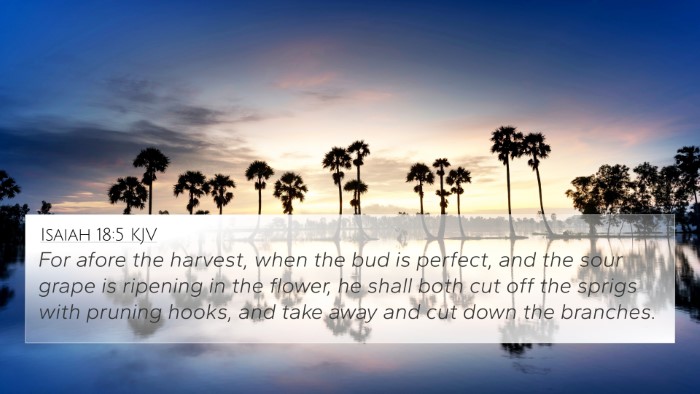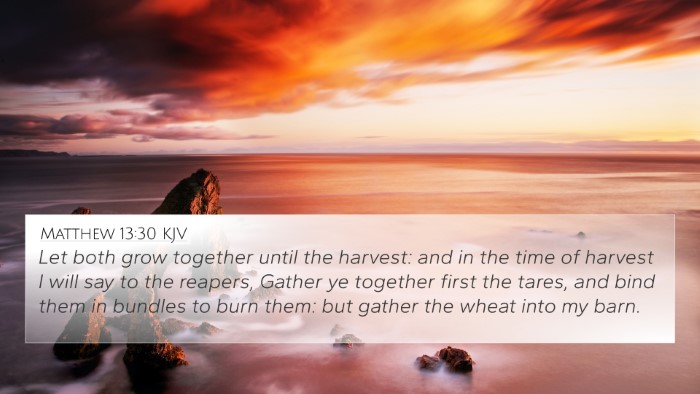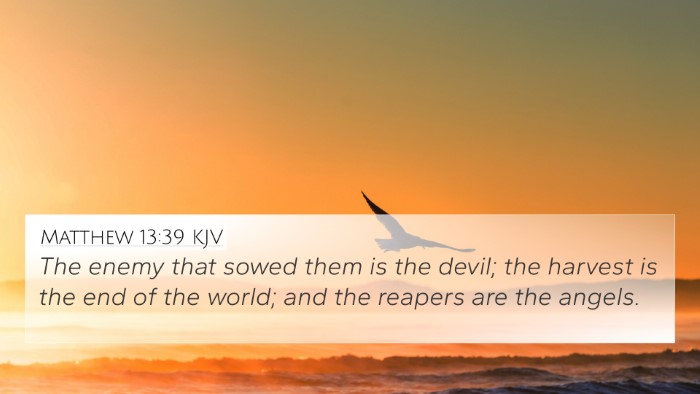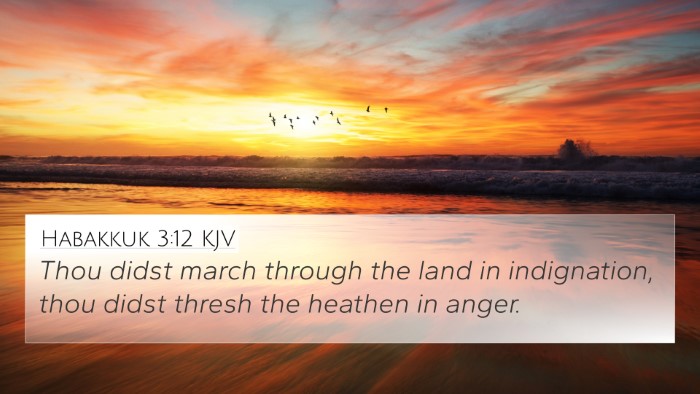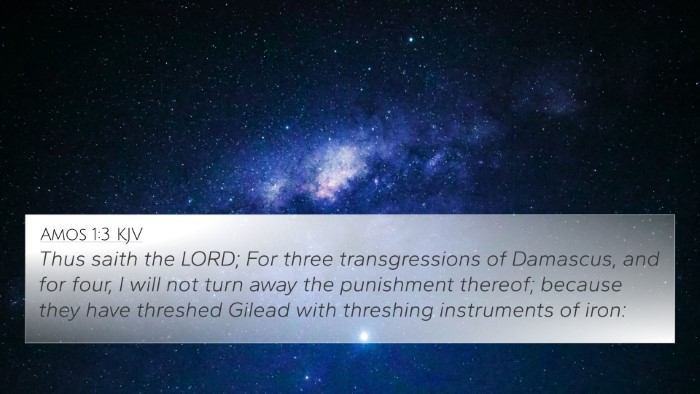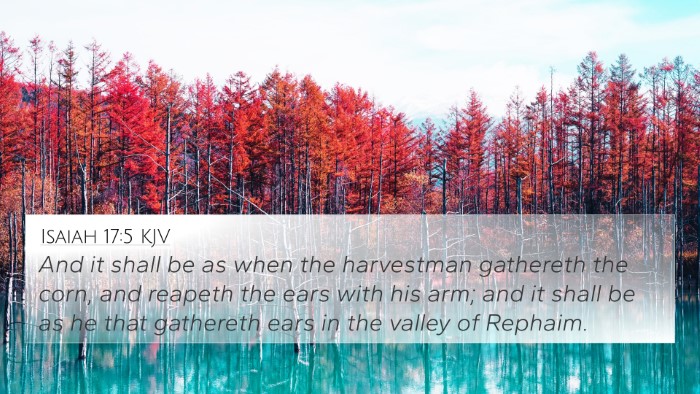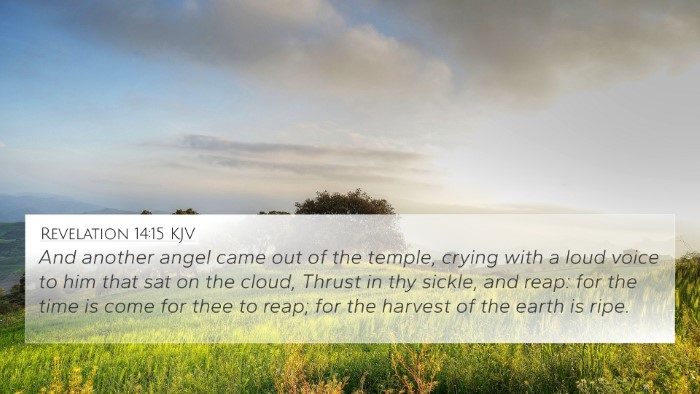Understanding Jeremiah 51:33
Verse: "For thus says the Lord of hosts, the God of Israel: The daughter of Babylon is like a threshing floor when it is time to thresh her; yet a little while, and the time of her harvest will come." (Jeremiah 51:33)
Summary of Meaning
This verse uses agricultural imagery to depict God's judgment upon Babylon. The "threshing floor" symbolizes the impending destruction and the process of separation – where the wheat is separated from the chaff. This is a powerful metaphor for divine judgment and serves as a reminder that although destruction may seem distant, it is an assured outcome at God's appointed time.
Commentary Insights
-
Matthew Henry:
Henry emphasizes the inevitability of God’s judgment. He notes that God, through Jeremiah, ensures the people of Israel understand the forthcoming fate of Babylon as a form of divine justice. The phrase “little while” reflects the sovereign timing of God’s plans, highlighting that although the fall of Babylon may not happen immediately, it is certain.
-
Albert Barnes:
Barnes offers insights about Babylon as a representation of oppression and ungodliness. The threshing floor is seen as a place where the righteous will be vindicated and the wicked (Babylon) will be judged. He connects this prophecy to the larger theme of God’s faithfulness in delivering His people from their enemies.
-
Adam Clarke:
Clarke interprets the "daughter of Babylon" as a depiction of the city’s pride and eventual downfall. He points out the simile used strengthens the prophecy by illustrating the contrast between the brief period before destruction and the permanence of God’s judgment. Clarke stresses that the "harvest" relates to the time of recompense, where God’s justice is realized.
Cross-References to Jeremiah 51:33
- Isaiah 21:10: "O my threshing, and the corn of my floor: that which I have heard of the Lord of hosts, the God of Israel, have I declared unto you." This verse similarly illustrates the theme of judgment and refinement.
- Revelation 14:15: "And another angel came out of the temple, crying with a loud voice to him that sat on the cloud, Thrust in thy sickle, and reap: for the time is come for thee to reap; for the harvest of the earth is ripe." This connects the concept of harvest to divine judgment in the New Testament.
- Matthew 3:12: "Whose fan is in his hand, and he will thoroughly purge his floor, and gather his wheat into the garner; but he will burn up the chaff with unquenchable fire." Here the imagery of a threshing floor is used to signify Jesus's judgment.
- Jeremiah 51:24: "And I will render unto Babylon and to all the inhabitants of Chaldea all their evil that they have done in Zion." This ties together the themes of divine recompense against Babylon.
- Micah 4:12: "But they know not the thoughts of the Lord, neither understand they his counsel: for he shall gather them as the sheaves into the floor." This verse reinforces the idea of gathering judgment upon the nations.
- Joel 3:13: "Put ye in the sickle, for the harvest is ripe: come, get you down; for the press is full, the fats overflow; for their wickedness is great." Joel echoes the expression of judgment through agricultural metaphors.
- Matthew 13:30: "Let both grow together until the harvest: and in the time of harvest I will say to the reapers, Gather ye together first the tares, and bind them in bundles to burn them: but gather the wheat into my barn." This passage supports the duality of the harvest theme present in Jeremiah.
Thematic Bible Verse Connections
The themes of judgment, divine justice, and the eventual harvesting of the righteous versus the wicked resonate throughout scripture. The imagery of harvest is pivotal in Biblical texts, serving both as a warning and a promise of God's sovereignty.
Ways to Study Cross-References in the Bible
Utilizing a bible concordance can greatly aid in revealing connections between Bible verses. Here are some tips:
- Use a Bible cross-reference guide: Search for related verses that provide context or deepen understanding.
- Explore thematic studies: Engage in a comparative Bible verse analysis to see how different passages converse with one another.
- Join a Bible study group: Collaborating with others can uncover insights and facilitate an inter-Biblical dialogue.
- Incorporate digital tools: Many online resources and apps offer comprehensive lists of Bible cross-references for efficient study.
Conclusion
Jeremiah 51:33 serves as a profound reminder of God's control over the fate of nations and the assurance that justice will ultimately prevail. The integration of agricultural imagery elucidates the concept of divine harvest, encouraging readers to seek understanding through cross-references and thematic connections across scripture.
